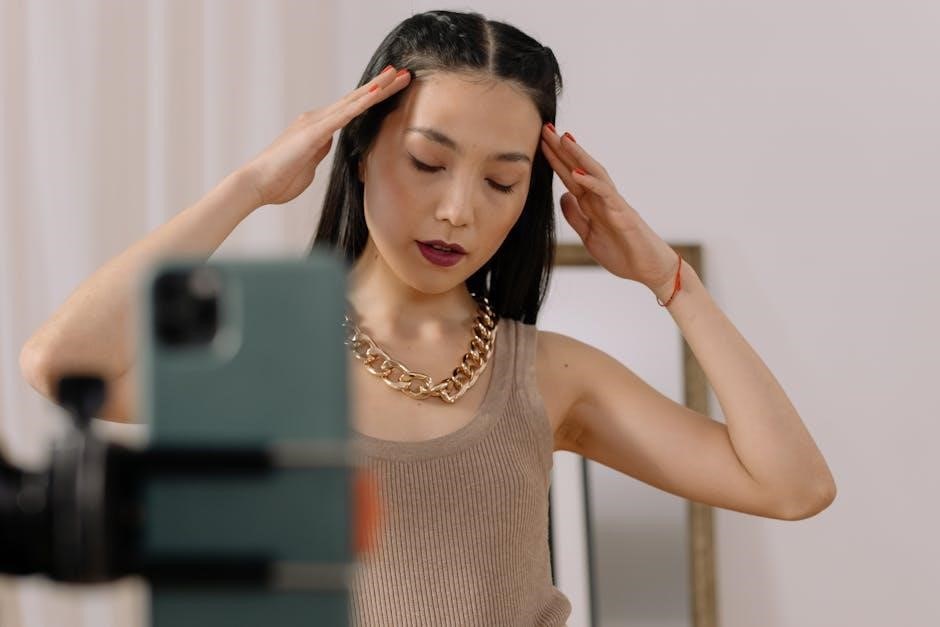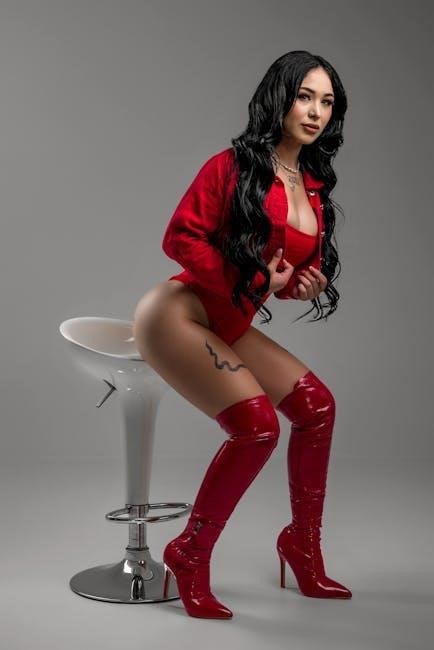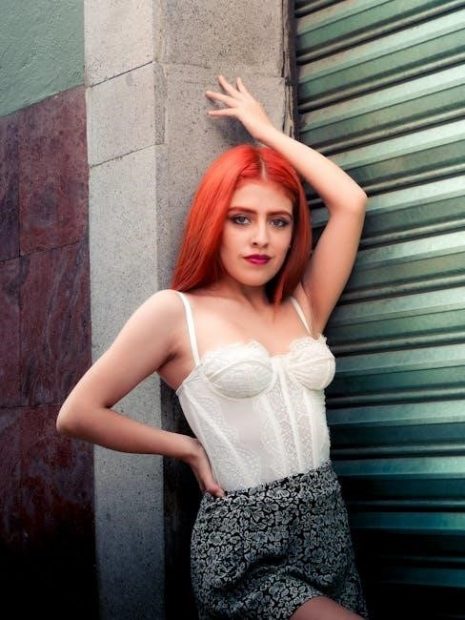Posing Guide: A Comprehensive Overview (Updated November 27, 2025)
Navigating the art of posing can transform photos, moving beyond awkwardness to confident expression, inspired by celebrity techniques and practical photography hacks for beginners.
Understanding the Fundamentals of Posing
Posing isn’t merely about “looking good”; it’s a communication tool, a way to convey confidence and personality through visual storytelling; Many feel awkward facing the camera, unsure of what to do when asked for a photo – a common experience even for celebrities accustomed to red carpets.
The core of effective posing lies in understanding angles and body language. It’s about creating shapes, dimension, and connection with the viewer. TikTok’s “lookgoodinphotos” (Buzan) demonstrates how celebrity inspiration, like poses from the 2023 Met Gala, can unlock posing potential.
Beginners often overlook the importance of foundational techniques. Learning to utilize natural light, experiment with perspective (shooting through objects, like puddles or bridge holes), and mastering panorama tricks are crucial steps. Every photographer, from legends like Ansel Adams to modern street photographers, began with these basics.
Why Posing Matters: Beyond Just “Looking Good”
Posing transcends superficial aesthetics; it’s about self-expression and controlling how you present yourself to the world. While many strive to avoid appearing “awkward” in photos – a feeling shared even by seasoned celebrities – effective posing builds confidence and communicates personality.
A well-executed pose can tell a story, evoke emotion, and create a lasting impression. It’s about more than just angles and posture; it’s about embodying a feeling and projecting it through the lens. Inspired by figures like Zendaya and Rihanna, mastering posing techniques allows for intentional self-representation.
Furthermore, understanding posing fundamentals enhances photographic artistry. Techniques like utilizing light and shadow, and employing perspective tricks, elevate images beyond simple documentation. It’s a skill applicable to personal photos, professional portfolios, and creative exploration.
Common Posing Mistakes to Avoid
Many individuals struggle with feeling natural in front of the camera, often labeled the “awkward duck” in group settings. A frequent error is stiffness – appearing tense rather than relaxed. Avoid locking your joints and aim for subtle, organic movements. Another common pitfall is improper weight distribution, leading to unbalanced or unflattering stances.
Furthermore, neglecting hand placement can create awkwardness. Avoid letting hands hang limply or hiding them completely; instead, use them to add shape or interact with props; Drawing inspiration from celebrity posing, like those seen at the Met Gala, demonstrates the power of intentional hand positioning.
Finally, failing to consider the background and perspective can detract from the pose. Be mindful of distractions and utilize techniques like shooting through objects to add depth and interest.

Posing for Portraits: Individual Focus
Individual portrait posing centers on highlighting personal features, utilizing angles, body positioning, and thoughtful hand placement to create compelling and flattering images.
Head Poses: Angles and Chin Placement
Mastering head poses is fundamental to flattering portraiture. A slight angle, rather than facing the camera directly, generally creates a more dynamic and visually interesting image. Experiment with tilting the head – a subtle tilt can soften the jawline and convey approachability.
Chin placement is equally crucial. Avoid a double chin by gently extending the neck and slightly pushing the chin forward and down. This creates definition and prevents the appearance of a rounded face. However, be mindful not to overdo it, as an overly extended chin can look unnatural.
Consider the direction of the gaze. Looking slightly off-camera can create a sense of mystery and intrigue, while direct eye contact establishes a connection with the viewer. Pay attention to the jawline; a relaxed jaw is key to avoiding tension in the face. Practice in front of a mirror to discover your most flattering angles and chin positions.
Body Positioning: Creating Shape and Dimension
Effective body positioning adds depth and visual appeal to any photograph. Avoid standing rigidly straight on; instead, create a gentle “S” curve by shifting your weight to one leg and slightly bending the knee. This instantly adds shape and prevents a boxy appearance.
Angling the body away from the camera, approximately 45 degrees, is generally more flattering than facing it head-on. This minimizes the width of the body and highlights curves. Remember to keep your shoulders relaxed and avoid hunching.
Utilize negative space to create a sense of balance and draw attention to the subject. Experiment with different arm positions – slightly bent elbows and relaxed hands look more natural than stiff, straight limbs. Consider how your body interacts with the environment; leaning against a wall or incorporating props can add context and interest.
Hand Placement: Avoiding Awkwardness
One of the biggest posing challenges is knowing what to do with your hands! Avoid letting them hang limply at your sides or clenching them into fists. Instead, aim for relaxed and natural positions.
Gently touching your face, hair, or clothing can add a subtle and elegant touch. You can also lightly hold a prop, like a bag or a scarf. If you’re unsure, try placing one hand in a pocket or lightly resting it on your hip.
Avoid crossing your arms tightly across your chest, as this can appear closed off. Instead, consider a looser, more open arm position. Remember to keep your fingers relaxed and slightly curved, avoiding stiffness. Observe how celebrities like Zendaya and Rihanna naturally position their hands for inspiration – fluidity is key!
Utilizing Props for Natural Poses
Props can be your best friend when seeking natural-looking poses! They provide something to do with your hands and add context to the photograph, reducing awkwardness. Think beyond traditional props – everyday objects can work wonders.

A coffee cup, a book, a jacket, or even a simple wall can become a focal point. Leaning against a wall creates a relaxed posture, while holding a coffee cup offers a natural hand placement. Consider how Disney Princesses Anna and Elsa utilize their costumes and surroundings for dynamic poses.
Experiment with interacting with the prop – sipping from the cup, flipping through the book’s pages, or adjusting your jacket. This adds movement and authenticity. Remember to choose props that complement your outfit and the overall aesthetic of the shoot, enhancing rather than distracting from the subject.
Posing with Others: Group Dynamics
Successful group photos require connection and interaction, avoiding stiffness through varied heights, levels, and intentional eye contact—even celebrities need guidance!
Creating Connection and Interaction
Genuine connection is paramount when posing in groups; avoid rigid lines and forced smiles. Encourage natural interactions – conversations, shared laughter, or even subtle glances between individuals. Remember, even seasoned professionals like Zendaya and Rihanna benefit from fostering authentic moments.
Instead of simply telling people where to stand, suggest an activity or topic of discussion. This prompts more relaxed and believable body language. Think about how people naturally interact when they’re comfortable with each other.
Small touches, like a hand on a shoulder or leaning in slightly, can convey closeness. Avoid everyone looking directly at the camera simultaneously; staggered eye contact creates depth and a more dynamic feel. The goal is to capture a moment, not a posed arrangement, transforming awkwardness into a visually appealing narrative.
Varying Heights and Levels
A visually interesting group photo avoids a static, uniform line-up. Introduce dynamism by playing with varying heights and levels. Have some individuals sit, kneel, or lean against objects while others stand. This creates depth and prevents the image from feeling flat.
Utilize the environment! Steps, walls, or even slight inclines in the ground can naturally create height differences. Don’t be afraid to experiment with perspective – shooting from a slightly lower or higher angle can dramatically alter the composition.
Consider the focal point of the group. The tallest individuals shouldn’t necessarily be in the center; strategic placement can draw the eye around the entire composition. Remember techniques like shooting through objects, adding layers and visual interest, enhancing the overall impact of the photograph.
The Importance of Eye Contact
Establishing genuine eye contact is crucial for connecting with the viewer. It injects life and personality into the photograph, transforming it from a posed snapshot to a captivating portrait. Direct eye contact creates an immediate connection, drawing the audience in and fostering a sense of intimacy.
However, avoid everyone staring directly at the camera simultaneously – it can appear stiff and unnatural. Encourage varied eye contact: some looking at the camera, others glancing at each other, or even off into the distance. This mimics natural interaction and adds depth.
Observe how seasoned professionals like Zendaya and Rihanna utilize eye contact on the red carpet – confident, engaging, and purposeful. Remember, even subtle shifts in gaze can dramatically alter the mood and impact of the image, elevating the overall aesthetic.
Celebrity-Inspired Poses: Learning from the Best
Emulate red carpet pros like Zendaya and Rihanna to unlock posing secrets, drawing inspiration from Met Gala moments and mastering confident, captivating techniques.
Zendaya’s Red Carpet Techniques
Zendaya consistently delivers stunning red carpet moments, and her posing prowess is a key component. She’s a master of utilizing angles, often creating an “S” curve with her body to elongate her silhouette and add visual interest. This involves a subtle shift in weight and a slight bend in the knees, avoiding a stiff, straight posture.
Furthermore, Zendaya expertly employs the “over-the-shoulder” glance, a classic technique that exudes confidence and allure. She doesn’t shy away from strong eye contact with the camera, but also knows when to break it for a more natural, candid feel. Her poses often incorporate a gentle hand placement – either subtly touching her hair or resting lightly on her hip – to draw attention to her features.
Importantly, Zendaya’s poses feel effortless because she embodies the confidence she portrays. She understands the power of owning the moment and projecting self-assurance, which translates beautifully through the lens. Studying her red carpet appearances provides invaluable lessons in body language and presence.
Rihanna’s Confident Posing Style
Rihanna’s posing is synonymous with unapologetic confidence and commanding presence. She doesn’t follow traditional “rules,” instead forging her own path with bold, impactful stances. A hallmark of her style is a strong, direct gaze – she meets the camera’s eye with unwavering intensity, projecting self-assurance and power.
Rihanna frequently utilizes a relaxed, yet deliberate, body posture. She often stands with her weight shifted, creating a dynamic and asymmetrical line. Her hand placement is equally impactful, often featuring a hand on her hip or a subtle touch to her neckline, drawing attention to her figure. She isn’t afraid to experiment with unconventional angles and perspectives.
Crucially, Rihanna’s confidence is the foundation of her posing success. She embodies a sense of self-possession that radiates through every photograph, making her a true icon of posing inspiration. She demonstrates that authenticity and owning your individuality are paramount.
Met Gala Posing Inspiration
The Met Gala serves as a masterclass in high-fashion posing, showcasing innovative techniques from celebrities navigating the red carpet. Poses often emphasize the dramatic silhouettes and intricate details of their couture gowns. A common tactic is the “S-curve,” subtly twisting the body to highlight the waist and create a flowing line.

Dynamic movement is frequently employed – a slight turn of the head, a graceful lift of the chin, or a sweeping gesture with the arms. Celebrities expertly utilize the backdrop, interacting with the museum steps or architectural elements to add depth and context to their images. Eye contact is key, often delivered with a captivating and alluring gaze.
The Met Gala demonstrates that posing isn’t just about static positions; it’s about storytelling and embodying the spirit of the event. It’s a blend of confidence, artistry, and a keen understanding of how to translate a look into a memorable photograph.

Posing for Specific Body Types
Effective posing adapts to individual physiques, flattering curves, petite frames, and taller statures with strategic angles and mindful positioning for balanced, beautiful results.
Posing for Curvy Figures
Embracing curves through posing is about celebrating shape and creating flattering lines. Avoid posing directly square to the camera, as this can broaden the silhouette; instead, angle the body slightly. A three-quarter pose is often incredibly effective, showcasing curves while creating dimension.
Utilize gentle bends in the knees to elongate the legs and define the waist. Placing a hand on the hip can accentuate the waistline and create a more defined shape. Consider incorporating flowing fabrics or garments that drape well, enhancing the natural curves.

Don’t be afraid to experiment with different arm positions – slightly lifting an arm can create space and avoid clinging to the body. Confidence is key; owning your curves will translate beautifully in photographs. Remember, the goal is to highlight your best features and feel comfortable and empowered!
Posing for Petite Frames
Posing for petite frames centers around creating the illusion of length and proportion. Avoid being lost in the background by utilizing strategic posing and mindful positioning. Highlighting the legs is crucial; consider poses with a slight bend in one knee, extending the leg furthest from the camera.
Elevate yourself whenever possible – standing on a slightly raised surface or utilizing heels can add valuable inches. Long lines are your friend; think elongated silhouettes through clothing choices and posture. Avoid bulky or oversized garments that can overwhelm a smaller frame.

Experiment with dynamic poses that create movement and draw the eye upwards. Confident posture and a genuine smile will always enhance any photograph, regardless of height. Remember, it’s about showcasing your personality and feeling fantastic!
Posing for Tall Individuals
Posing as a taller individual requires embracing your height and avoiding poses that accentuate length in unflattering ways. Instead of trying to appear smaller, work with your stature to create striking and elegant images. Bending limbs slightly – a softened elbow or knee – prevents a stiff, linear appearance.
Utilize a lower shooting angle; this can minimize the feeling of overwhelming the frame. Avoid standing rigidly straight; a slight lean or curve in the body adds dynamism. Consider poses that break up the vertical line, such as sitting or crouching.
Experiment with incorporating props to create visual interest and balance. Confident posture and a relaxed expression are key to conveying grace and poise. Remember, your height is an asset – own it!

Photography Hacks to Enhance Poses
Clever techniques like panorama tricks and shooting through unique elements – puddles, archways – dramatically elevate poses, adding depth and artistic flair to any photograph.
Utilizing Natural Light and Shadows
Mastering natural light is paramount for flattering poses. Soft, diffused light – think open shade or an overcast day – minimizes harsh shadows and creates a more even complexion. Avoid direct sunlight, which can cause squinting and unflattering highlights.
Pay attention to the direction of light; side lighting sculpts features and adds dimension, while backlighting can create a beautiful halo effect. Embrace shadows! They define shape and add mystery. Experiment with positioning your subject relative to the light source to see how it alters their appearance.

Reflectors can bounce light into shadowed areas, brightening the face and reducing contrast. Even a simple white board or piece of paper can make a significant difference. Understanding how light interacts with your subject is a foundational skill for impactful posing.
Perspective Tricks: Shooting Through Objects
Elevate your posing with creative perspective techniques, like shooting through objects to frame your subject in unique ways. This adds depth and visual interest, transforming ordinary scenes into captivating images. Think beyond simply pointing the camera; look for opportunities to utilize foreground elements.
Consider shooting through foliage, archways, or even the gaps in a fence. Puddles offer fantastic reflective surfaces, creating surreal and artistic effects. Holes in streets or bridges can also provide compelling framing options.
Experiment with focus – blurring the foreground object slightly can draw more attention to your subject. This technique requires careful composition and a willingness to explore unconventional viewpoints. It’s a fantastic way to add a cinematic quality to your photos;
Panorama Posing Techniques
Unlock dynamic posing possibilities with panorama mode! This isn’t just for landscapes; it’s a powerful tool for creating visually striking portraits and group shots. The key is movement. Instead of static poses, encourage subjects to interact with the environment or each other during the panorama capture.
Have individuals walk into the frame, change poses mid-sweep, or pass props between themselves. This creates a sense of energy and flow, resulting in a unique and engaging image. Experiment with different speeds – a slower pan allows for more deliberate posing changes, while a faster pan creates a more blurred, artistic effect.
Remember to communicate clearly with your subjects to ensure smooth transitions and avoid awkward overlaps. Panorama posing adds a playful and unexpected element to your photography.
